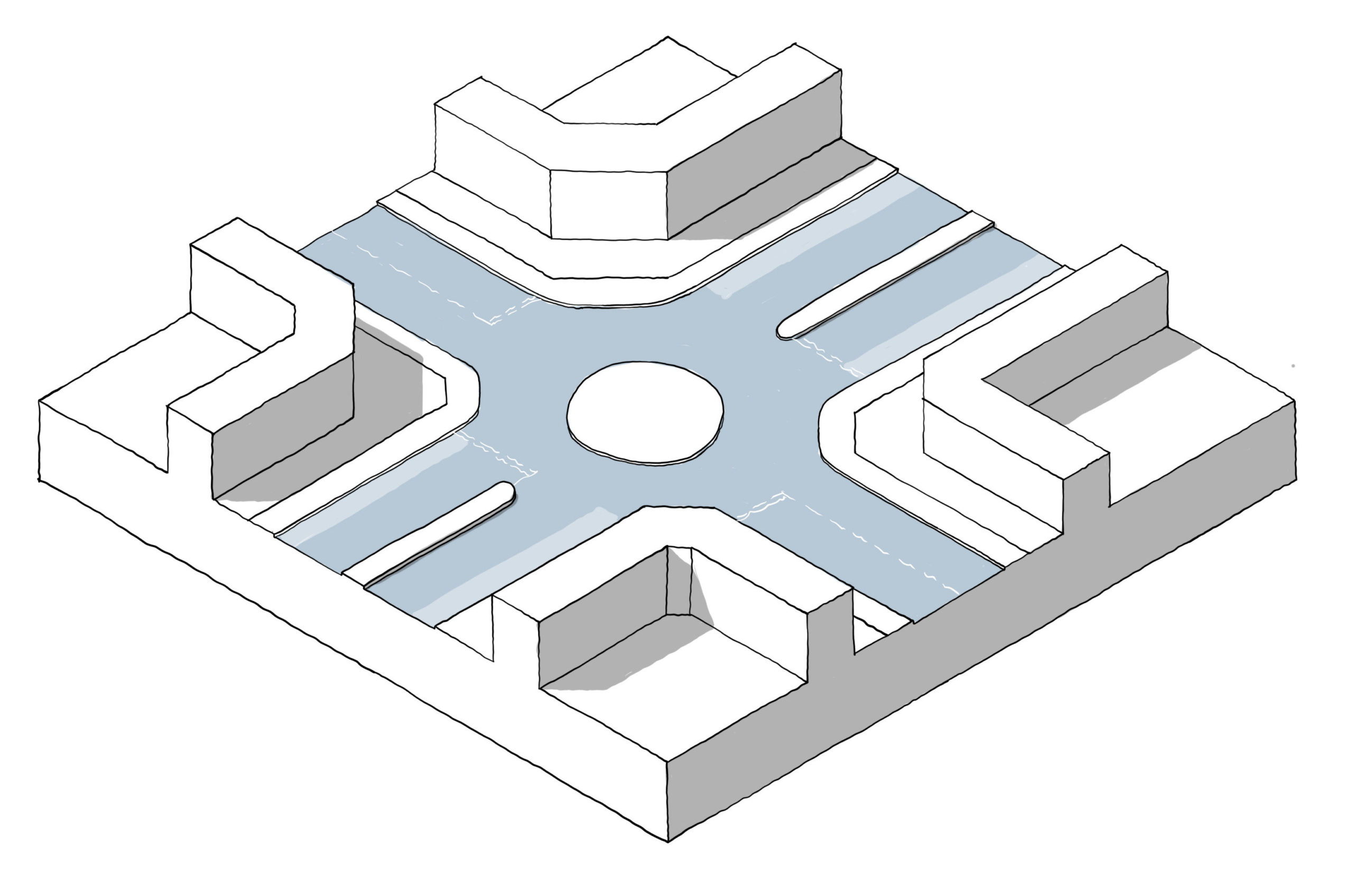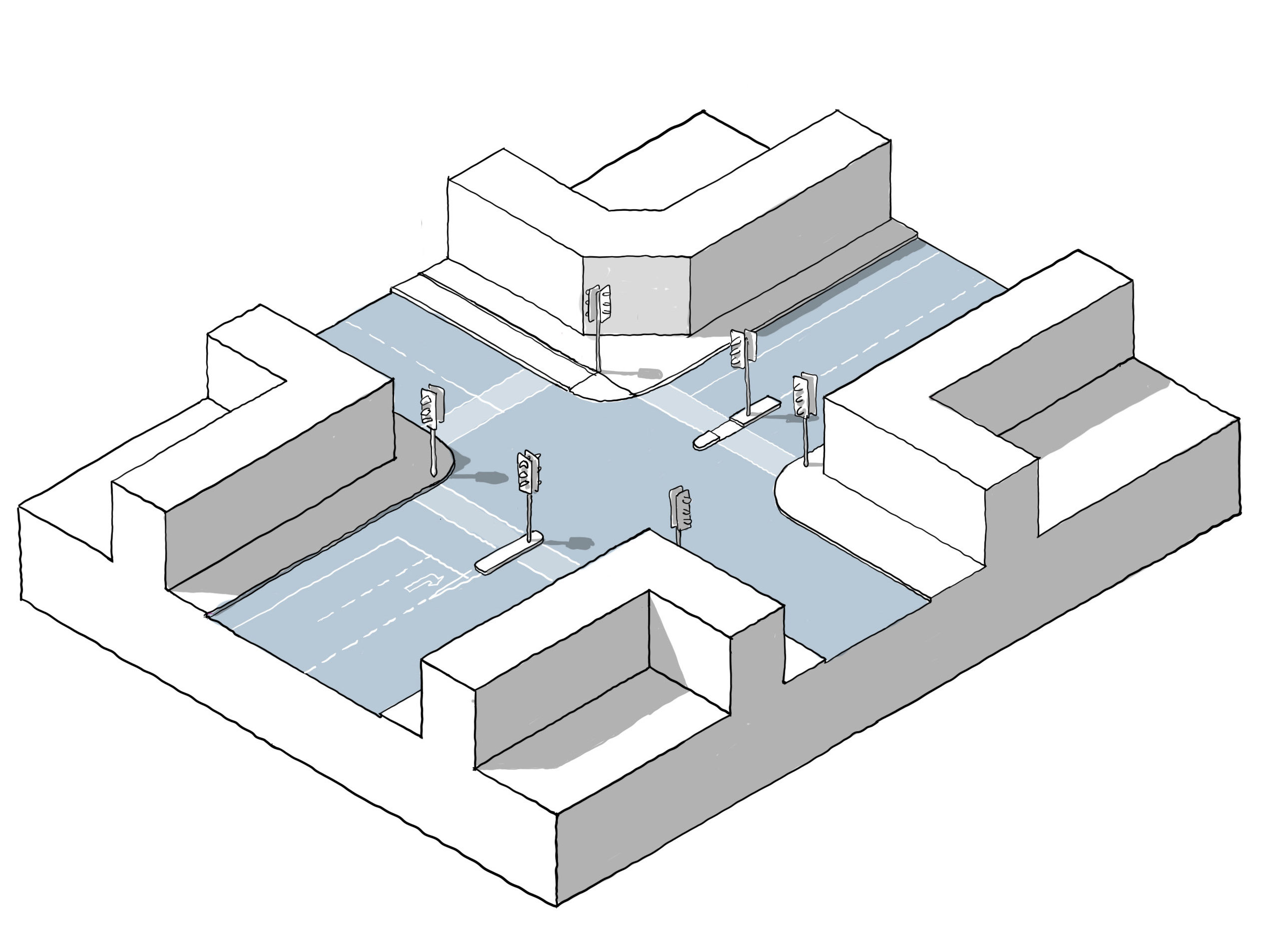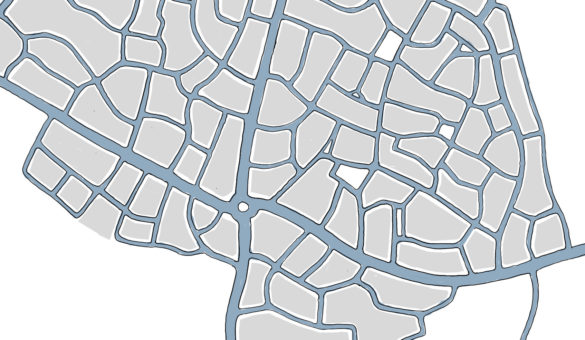Healthy Place Making and the National Model Design Code: Junctions and Crossings
Our National Model Design Code series focuses on content within the National Model Design Code, specifically centring on its illustrations (all provided with thanks and credit to Department for Levelling Up, Housing and Communities) and how such design has the potential to influence the development of healthy places.
When we think about junctions and crossings, it could be tempting to focus thoughts on how traffic can flow up to and through this infrastructure. Whilst this is understandable, it’s also important to note how the choice of design or type can influence how we decide to move around our places, and subsequently whether we make more or less healthy choices.
The National Model Design Code summarises this well:
“The way that streets join to each other and the way that people are able to cross streets and access points all have an important influence on walking and cycling”
If we design with vehicle-first thinking, the result is likely to be vehicle-first movement. It’s therefore beneficial to also think from a sustainable travel perspective and how infrastructure options will impact upon those who may choose (or would choose) to walk or cycle.
Using the four junction types highlighted in the National Model Design Code, we will consider the active traveller’s experience of moving through and engaging with their place.

Roundabouts and mini roundabouts are effective at managing traffic flows from all directions, but can be challenging for pedestrians and cyclists to navigate.
Cyclists approaching the junction, and waiting for their opportunity to enter the roundabout, will be required to slow or stop – and likely dismount. This is similar to the experience of a driver, however the additional challenge facing a cyclist is the requirement and difficulty to accelerate quickly once they are able to enter the junction. Gaining initial momentum is a strenuous phase of cycling movement, and for many this can pose a barrier which may;
- Require them to dismount, leave the highway and use pedestrian infrastructure to cross and pass the junction, resulting in increased travel time and inconvenience;
- Opt for an alternative route avoiding roundabouts, which could increase journey distances and time, or;
- Incentivise them to mode shift toward use of alternative transport (i.e. private vehicles or public transport).

For pedestrians, navigating crossings adjacent to roundabouts can be more complex, with often-larger distances to cover at the junction, and vehicle movements that may be more difficult to predict.
All of these impacts serve to prioritise other forms of travel over walking and cycling.
Where roundabouts are considered essential, particular effort should be given to exploring types of roundabout which prioritise active forms of travel – providing easier and more enjoyable experience for those opting to walk or cycle.

Traffic signals provide controlled movement for vehicles, pedestrians and cyclists alike. The addition of specific facilities for cycles and a variety of pedestrian users can also aide in their effective use.
It should be noted however, that signalled crossings can still present an inconvenience in various forms:
- There remains a requirement for all users to wait, giving way to others depending on the signal presented at any given time. This creates a break in movement and slows journey time.
- For users of the crossing, particularly slower users (such as the elderly, mobility impaired, or users with children, pushchairs, shopping etc.), the speed at which they are required to cross can create difficulties and a poor travel experience.
Whilst signalled crossings can provide a safe opportunity to cross, it should be noted that they may not necessarily prioritise pedestrian movement above those of the road user (since both parties are occasionally required to give way to the other), and therefore alternative infrastructure could be considered which aligns better with Manual for Streets guidance to prioritise sustainable travel.

Simple junctions can provide an opportunities, in the right conditions, to explore ways to maximise engagement in active travel.
While many simple junctions can require pedestrians and cyclists to navigate challenging vehicular movement, there are opportunities to prioritise sustainable travel through simple design interventions…
- Continuous pavements, as shown in the image, provide a right of way to pedestrians, with vehicles required to give way to sustainable forms of travel. This slows the vehicle, but provides a more enjoyable experience when engaging in active travel.
- Similarly, incorporating cycle infrastructure into such design, particularly protected cycle lanes, provides an opportunity to create more attractive infrastructure which could help reverse the previous ‘mode-shift’ identified above towards walking and cycling over other, less sustainable forms of travel.
Do you wish to provide further comments on this illustration, or perhaps you have your own imagery you wish to share? We always welcome additional commentary and input from Healthy Place Making users, so if you have thoughts that haven’t been mentioned above, or suggestions on how the designs could be further improved to support the development of healthier places, please let us know.
You can use the enquiry button at the bottom of this page to submit your thoughts. Don’t forget to let us know which page your comments relate to!
More content from Healthy Place Making

Healthy Place Making and the National Model Design Code: Development Facing the Public Realm
Our National Model Design Code series focuses on content within the National Model Design Code, specifically centring on its illustrations (all provided with thanks and credit to Department for Levelling...

Healthy Place Making and the National Model Design Code: Aspects and Health & Wellbeing
Our National Model Design Code series focuses on content within the National Model Design Code, specifically centring on its illustrations (all provided with thanks and credit to Department for Levelling...

Healthy Place Making and the National Model Design Code: Securing Health
Our National Model Design Code series focuses on content within the National Model Design Code, specifically centring on its illustrations (all provided with thanks and credit to Department for Levelling...
Read more about "Healthy Place Making and the National Model Design Code: Securing Health"

Healthy Place Making and the National Model Design Code: Spot the Difference – Masterplanning to Support Connectivity
Our National Model Design Code series focuses on content within the National Model Design Code, specifically centring on its illustrations (all provided with thanks and credit to Department for Levelling...
Downloads
Make the most of the Healthy Place Making platform
As well as ensuring you are always in the know about future changes and updates to Healthy Place Making, registering with us will enable to you to curate your own project boards that you can share with others – helping you to embrace the Healthy Place Making approach to find, curate and collaborate on making healthier places for all of our residents.

